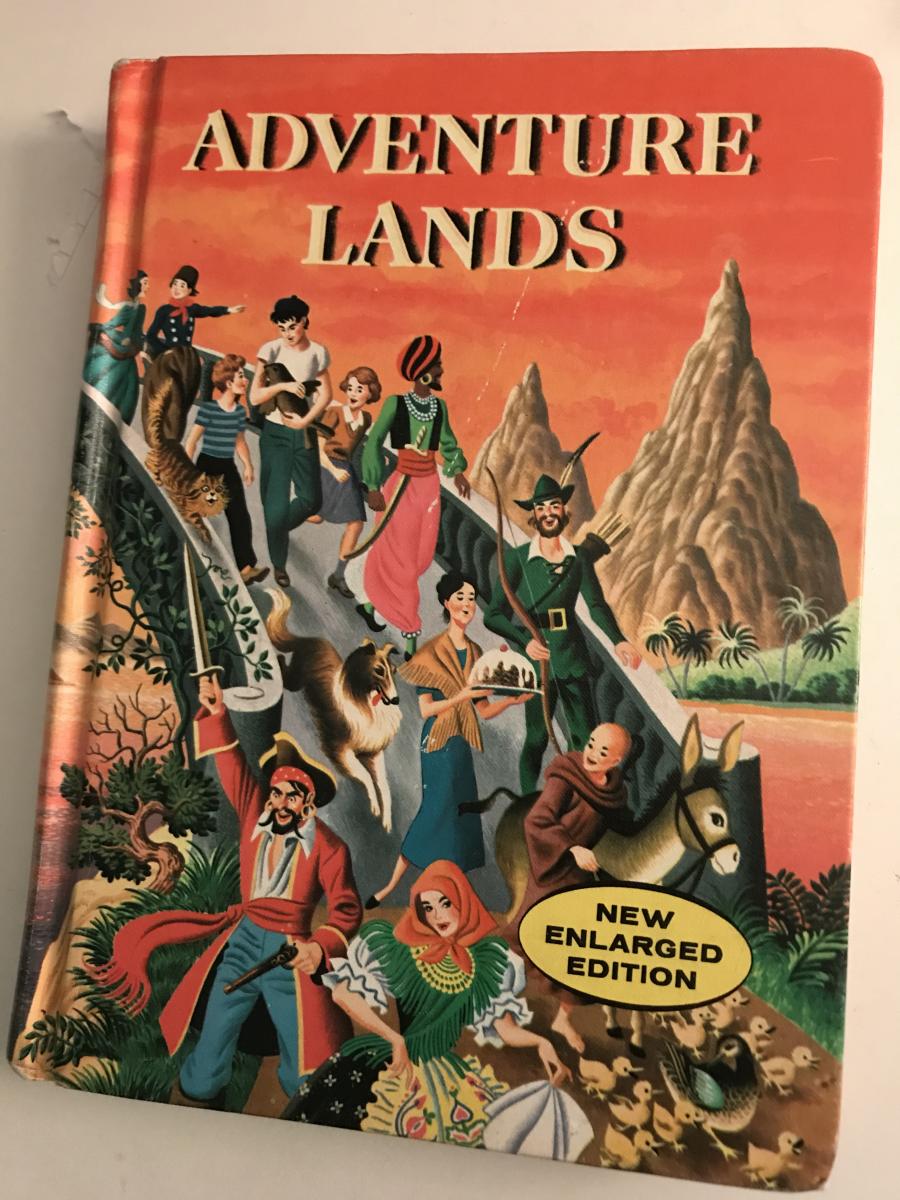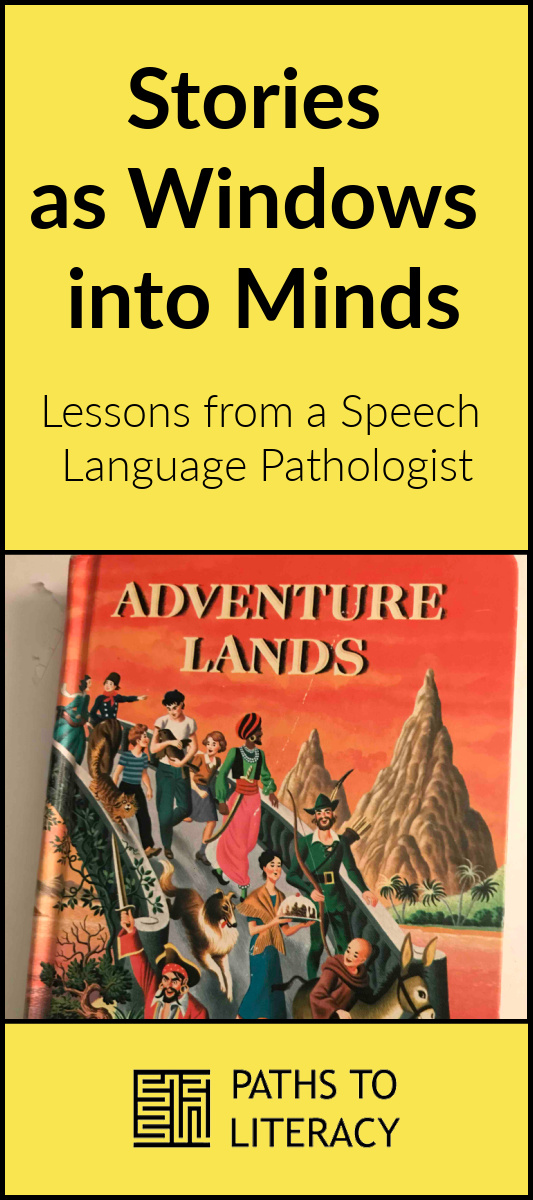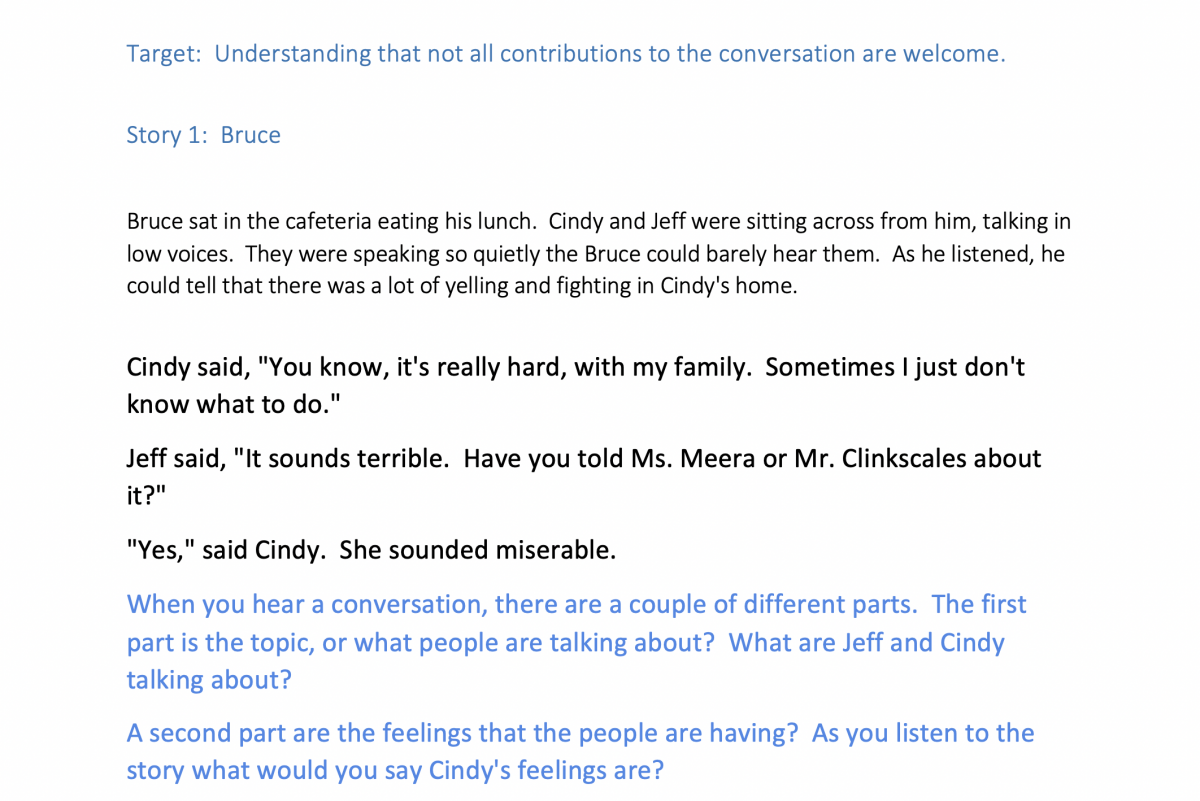Stories as Windows into Minds
 Sometimes all I want is for someone to tell me a story. Tell me about how you traveled to India by yourself and it took a long time for you to understand that the customs officer wanted to let you into the country and would, if only you would bribe him. How did the woman you were trying to impress react when the horse bucked you into the dry creek bed? What was the worst day of your life? Listening to those stories is a way for me to understand what it’s like to be you.
Sometimes all I want is for someone to tell me a story. Tell me about how you traveled to India by yourself and it took a long time for you to understand that the customs officer wanted to let you into the country and would, if only you would bribe him. How did the woman you were trying to impress react when the horse bucked you into the dry creek bed? What was the worst day of your life? Listening to those stories is a way for me to understand what it’s like to be you.
We all have students who have limited understanding that the thoughts and feelings of others are different than their own. For these students, stories provide a window into the minds of others.
Why Write Your Own Stories as a Therapist or Teacher?
For many years now, I’ve been writing stories, most of them short, to help my students understand how others might perceive the types of things they say and do. As a speech therapist, I started writing because it was time-consuming to find published literature that specifically addressed the points I wanted to make and it was much easier for me to just write them myself. That way I could use the level of language I thought my students would understand and I could choose topics that were specific to their areas of interest.
Sample Stories
I have lots of these stories splattered all over my hard drive. The two I’m sharing today tell the same story from the point of view of two different characters. The first story targets understanding that you can misunderstand the intent of others. The second story is about intruding upon private conversations. The questions that go with them are meant to guide discussion as well as provide the student with something to think about.
Lesson Plan: Understanding that not all contributions to the conversation are welcome
Lesson Plan: Understanding that you can misunderstand the intent of others
Guidelines When Writing Your Own Stories
If you decide to write your own stories, here are a few guidelines to keep in mind:
- I do sometimes make my stories about my own students, especially if the content is not emotional, for example understanding the meaning of Texas History vocabulary. However, when content is related to social linguistic targets that could potentially be embarrassing to a student, I make sure that the characters have different names. They may be similar to the student, but they’re not the student. I’m also careful about using the names of other students on our campus, though I sometimes do use staff names.
- It’s better to think of the stories as a guideline for discussion than a test. An attitude that there are no wrong answers but we’re going to talk about it is helpful. (I’m not 100% successful at remembering to do this by the way. My worst sessions are when I forget.) Phrases such as “I’m going to challenge your thinking on that” and “Wow, I saw it completely differently” are helpful.
- I tailor the language, content and length to the student’s emotional maturity and language level. This technique can be done successfully with stories that are only 3 to 5 sentences long. Sometimes I’ll integrate language that other professionals on our campus are using. For example, a few years ago, one of the psychologists gave one of our students an emotional rating scale and I integrated the scale into descriptions of the characters feelings.
In summary, this has been a good way for me to get the therapy materials I need inexpensively and in a relatively short time. I hope people will try this and let me know what else you think of.



